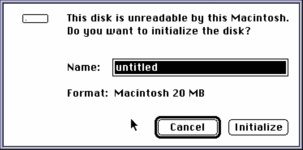@OneGeekArmy
Please forgive my ignorance because I'm most likely overlooking something obvious, but I trying to figure out how to use Disk Jockey 2.5 to create a BlueSCSI compatible version of Total Reply 5, which is a 32MB ProDOS image.
I started by setting the capacity to 32MB...

Next, I expanded Advanced Options, which reveals a Blank HFS file I cannot delete (the source of my trouble)...

I can click the "+" button to add the Total Replay image like this...

But that changes the disk image to 64MB because of that Blank HFS I don't want...

Again, I just want to convert the Total Replay 32MB image into a BlueSCSI compatible version. That's it. How do I accomplish that with version 2.5 of Disk Jockey?
Thank you!
Please forgive my ignorance because I'm most likely overlooking something obvious, but I trying to figure out how to use Disk Jockey 2.5 to create a BlueSCSI compatible version of Total Reply 5, which is a 32MB ProDOS image.
I started by setting the capacity to 32MB...
Next, I expanded Advanced Options, which reveals a Blank HFS file I cannot delete (the source of my trouble)...
I can click the "+" button to add the Total Replay image like this...
But that changes the disk image to 64MB because of that Blank HFS I don't want...
Again, I just want to convert the Total Replay 32MB image into a BlueSCSI compatible version. That's it. How do I accomplish that with version 2.5 of Disk Jockey?
Thank you!



